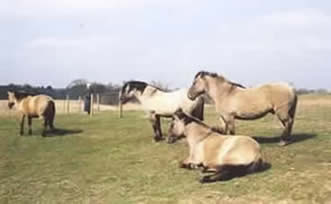THE HEN REED BEDS
|
|
Above: Bittern - from the museum's collection of stuffed birds. Left: Local newspaper report from 1933, the year of the museum's founding, showing that bitterns were, even then, a rarely seen species.
If you'd like to hear a bittern booming and see movies of their behaviour, click here to visit the RSPB web page about them. |
As all coastal reedbeds are under threat from global warming, Suffolk Wildlife Trust acquired the inland Hen Reed Beds in 1999 and has since restored, conserved and extended the reserve to attract the nationally rare bittern which is now becoming established, as are marsh harriers and bearded tits, little egrets, redshank and hobby.. Mammals include otters, water voles (shy and secretive) and Chinese water deer. Dragonfly, damselfly and many types of butterflies can also be found. You can find Hen Reedbeds on the A1095 between Southwold and the A12. A small herd of Tarpan horses from Poland has been introduced to help manage the reedbed by grazing. |
 |
Tarpan horses from Poland were introduced into the Hen Reed Beds to help manage the habitat by grazing. Tarpans are unusual in that their natural diet is reeds and that they are accustomed to spending long periods standing in water. |


